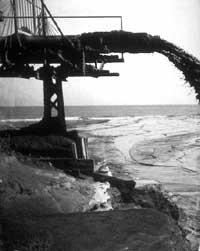Whose is the dirt?
In the event that oil of unknown origin arrives at our shores or that they want to sell us counterfeit paintings or paintings, in both cases we can follow the trail of the culprit for the year 1995, when the American company Isotag hopes that the chemical marker that uses the heavy isotope of hydrogen is on the market. Deuterium shall be marked using in a certain proportion any gas or liquid and may be identified by such proportion where necessary. This new system would work similarly to the line code used in supermarkets.

For example, to mark the oil of a tank it would be enough to mark one of its components. Isotag would produce a few liters of this marked component and keep the data secret. It would replace some hydrogen atoms of this marking component with deuterium. Once added to the tank oil, even if it appears anywhere, there would be no problem identifying it accurately.
And who needs to be able to identify your product? Which company will spend its money on it and why?
Let's think there are robberies in an oil company. There is no concrete way to locate oil. But if it is marked yes, so the way of theft and the appearance of those responsible will be easier. The marked product is identified by known and relatively common techniques called mass spectroscopy and gas chromatography.
Other proposed uses. One of them is the identification of works of art. For a limited edition of a lithograph, for example, you can mark one of the inks to use and thus be able to distinguish it from the falsifications and the original. Management can also establish other uses, such as harmful spill control systems. To do so, it should impose on companies that issue harmful and unhealthy products the obligation to mark such spills and follow up through this “brand”. So one could not say “that dirt is not mine”. It would then be an undeniable proof of identity and denunciation of those who exceed accepted levels.





